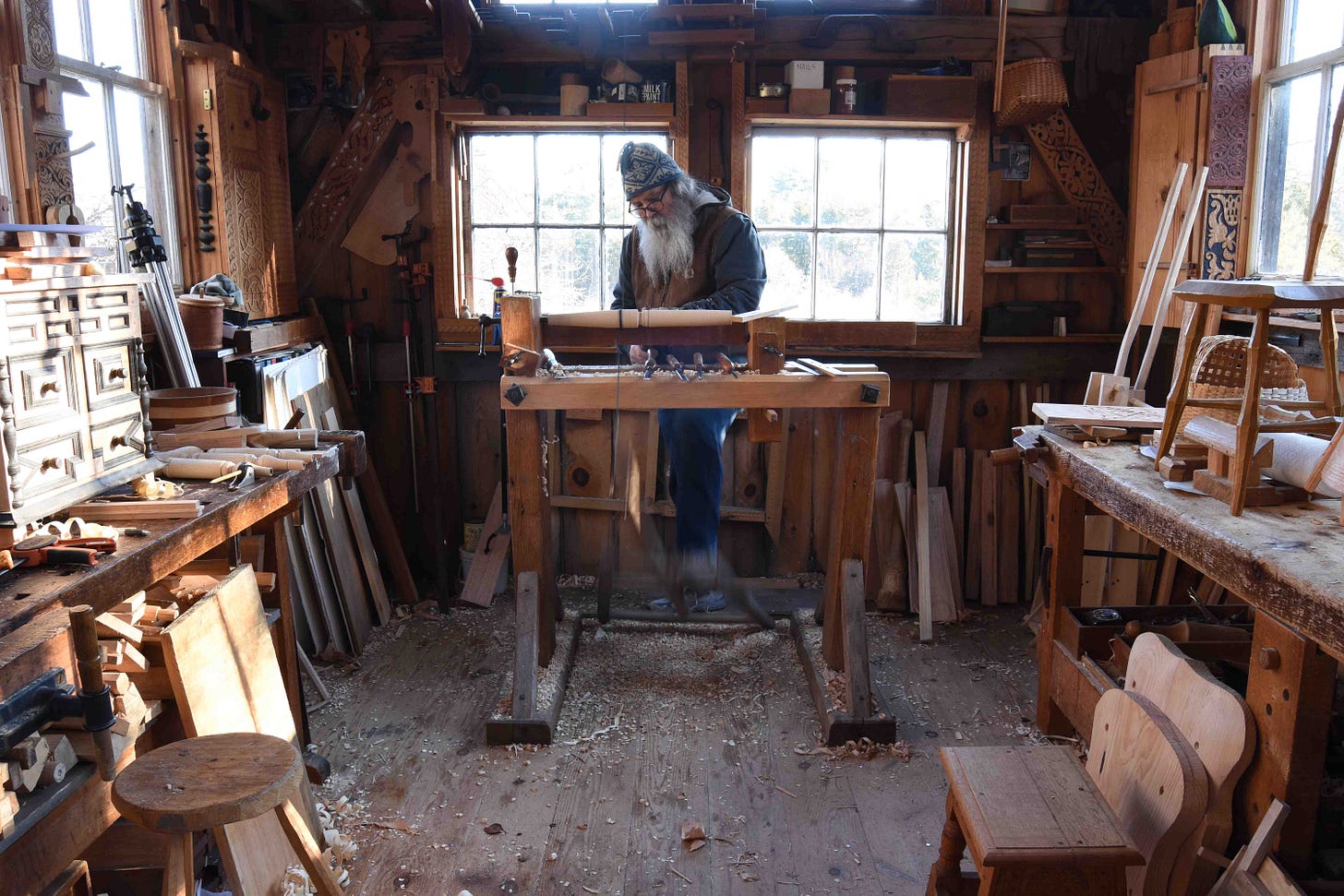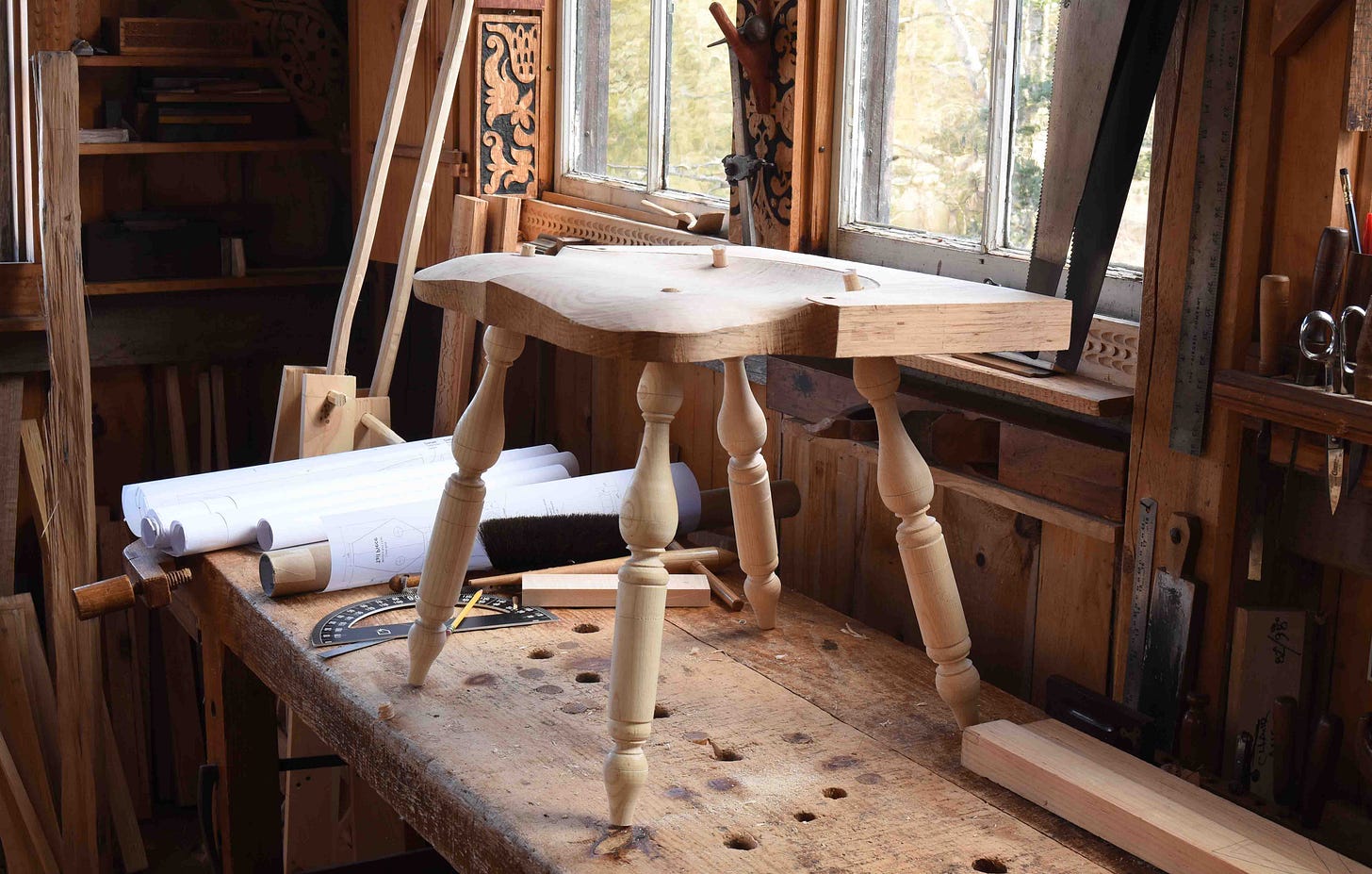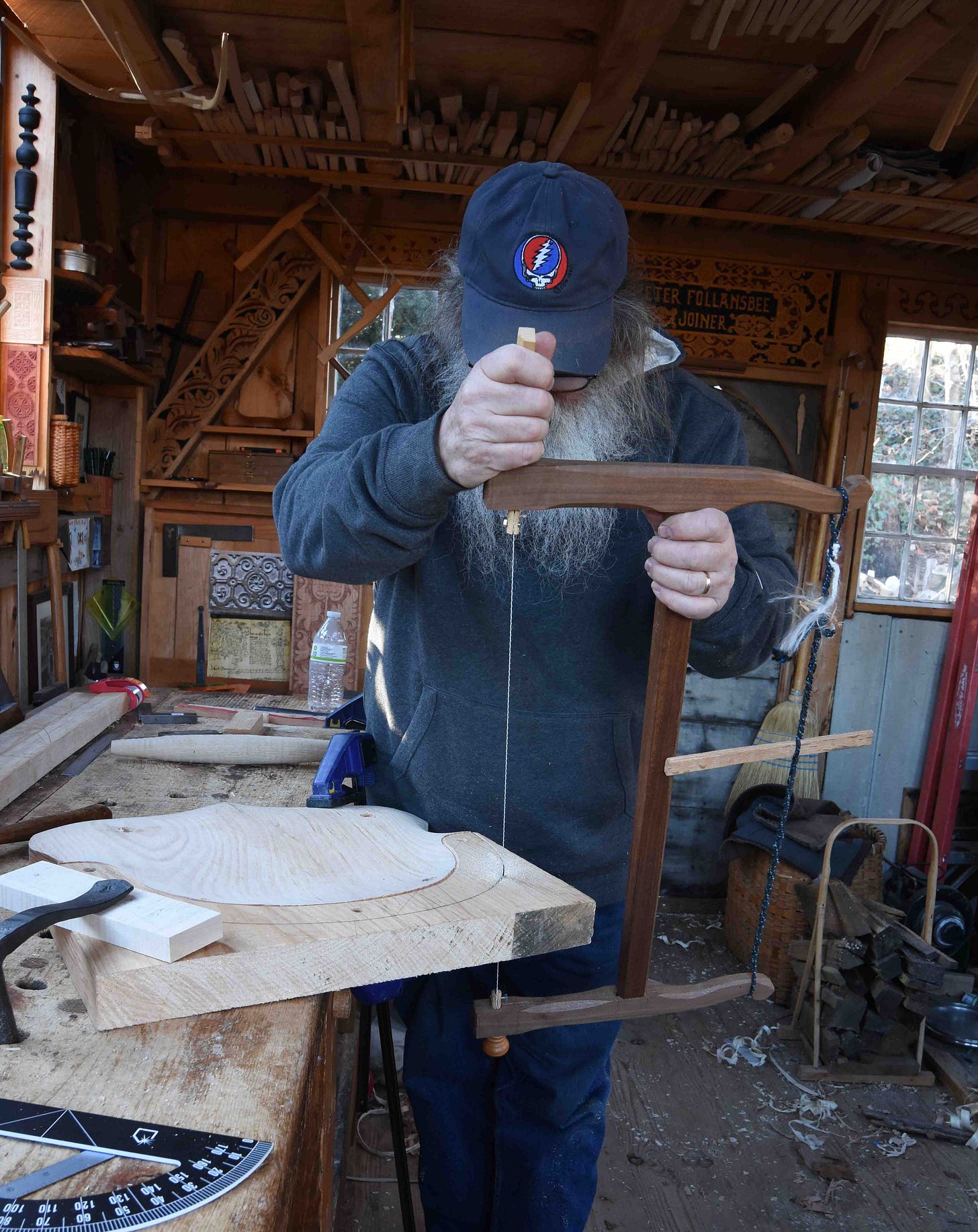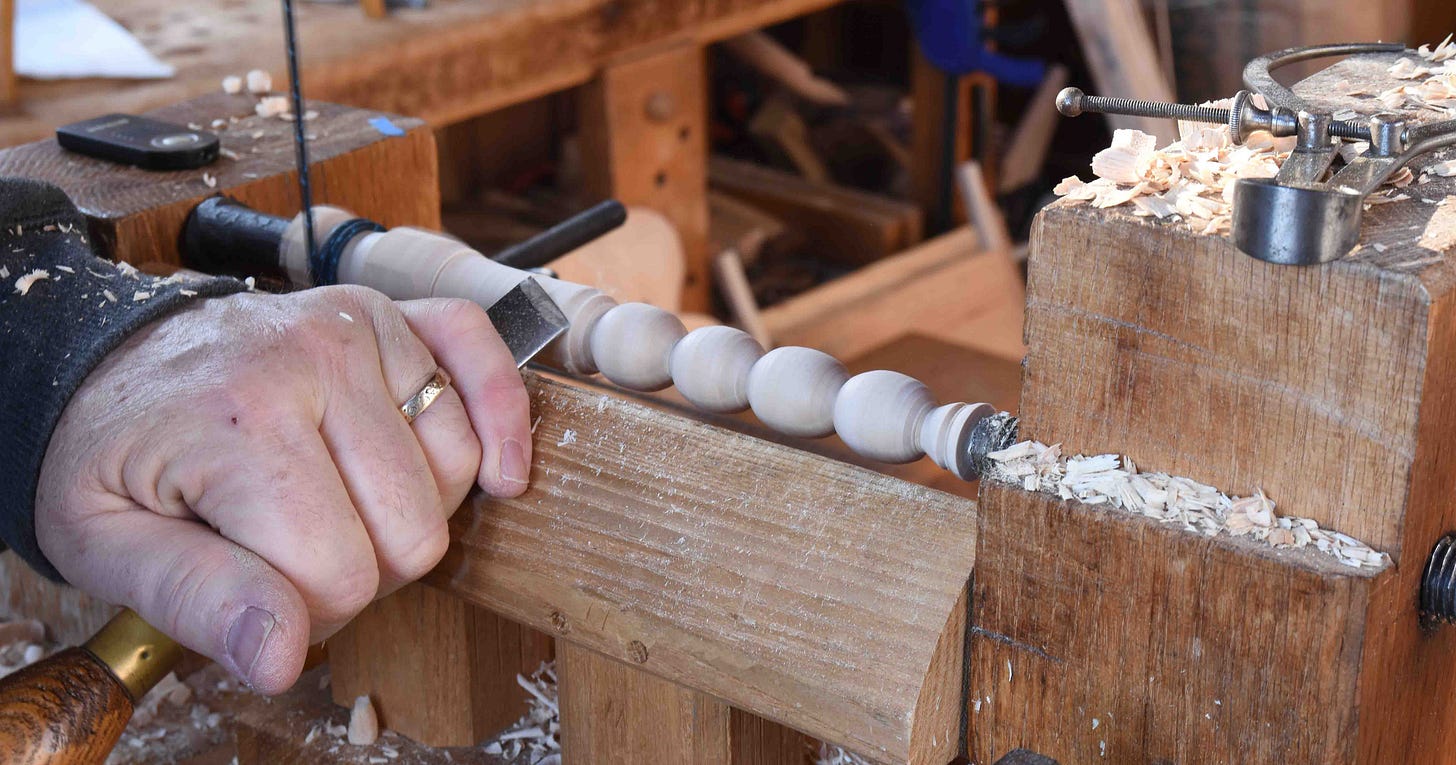When I want to turn stuff - like the legs for a Windsor chair - the shop descends into even more chaos than usual. When not in use, my lathe is shoved up against the back wall of the shop. Then junk gets piled on and under it. So when I need to do some turning, the reverse happens. The junk gets piled on the benches and the lathe gets pulled forward about three feet. Just the price I pay for a small shop. It works though. Today & yesterday I’ve been turning legs in dry ash for a Windsor chair I’ve been wanting to make for years - Curtis Buchanan’s comb back. https://www.youtube.com/playlist?list=PLL_KlogKd1xf-P7ObrjmBHEWgiZAl37lx
(I turn them into cylinders when they’re green, then turn the details when they’re drier.) It’s now 13 years since Curtis released his home-made videos of building that chair. I had to re-learn how to make Windsors first, working my way up to this one. Plus I only make them between other things. I love comb backs - I made one in 2023, of an old pattern that I learned from Curtis and he got it from Dave Sawyer.
This one I’ve started is different, deeper bend to the comb, thicker arm and a “shield” seat, not an oval. I had the seat partially done - then got delayed until I could turn the legs. Once I had the legs turned, the seat bored and reamed - I then knocked them back out & trimmed the seat.
Some days you wake up & live right and today I sawed perfectly along the lines. Curtis’s chair has a tail out back with two bracing spindles, but I dumped that. I’ve veered away from those braces/tails. I think they’re more for our eyes than anything else. But what do I know?
While I had the lathe setup and the tools out, I turned some of the applied decoration for my long-idle dressing box project. These little ovals are maple, glued up to a center strip. In this case, it’s all small scale. The finished ovals are about 1” long by 11/16” wide. I need five of them for the top rail of the box - but I’ve found that it’s easiest (for me) to turn a bunch of them quickly then discard any bummers. So I made maybe 12 or so. On the far right end of this turning, I’ve just cut into that stock to get it out of the way. The ovals can’t reach all the way to the points in the lathe. Turning them down to nothing there would send the piece flying across the room. Which is far too exciting for me.
Once it’s round, all the work is done with the skew. The biggest challenge here is the whole blank flexing - it’s quite thin and once you cut into it enough it gets weaker and weaker. That’s why I only turn short versions of it- this one was maybe 10”-12” long or so.
Keep reading with a 7-day free trial
Subscribe to Follansbee's Substack to keep reading this post and get 7 days of free access to the full post archives.









